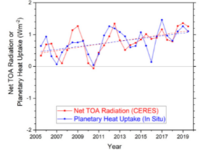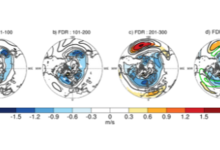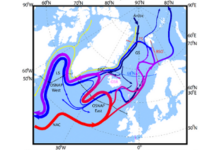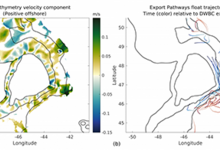Research Highlights
We aim to feature the latest research results from US scientists whose published paper features work that is sponsored by one or more sponsoring agency programs of US CLIVAR (NASA, NOAA, NSF, DOE, ONR). Check out the collection of research highlights below and sort by topic on the right. Interested in submitting an article for consideration? See our Research Highlight Submission Guidelines page for more information.
From 2013-2016, northeast Pacific Ocean experienced an extreme marine heatwave extending from Gulf of Alaska to Baja California. During this time, California suffered from a multi-year drought. Will these compound extremes occur more frequently in the future under global warming? A new study by Shi et al. shows that such events along the West Coast were unusual in the past and in the future, similar conditions will increase.
Continued increases in concentrations of well-mixed greenhouse gases in the atmosphere has led to a net gain of energy by Earth. Most of this excess energy warms the ocean, with the remainder heating the land, melting snow and ice, and warming the atmosphere. This Earth energy imbalance (EEI) is responsible for the unprecedented changes in surface temperature, sea level, precipitation patterns, and extreme weather that have been observed in recent decades. A new study by Loeb and co-authors reveals that both satellite observations and in situ planetary heat uptake measurements independently show an approximate doubling of EEI from mid-2005 to mid-2019.
How does a rapidly warming Arctic affect mid-latitude climate now and future years? Literature on this subject shows contrasting results, in part due to differences in protocols when modeling the climate response to Arctic sea-ice loss. Recommended by PAMIP, a common practice to smooth out noise of atmospheric variability (a major source of uncertainty in response to sea-ice loss) is to run ensembles (>100 ensemble members) of simulations. However, a recent study by Peings et al. shows that having 100 ensemble members in fact does not guarantee a robust assessment of the response.
The AMOC is a key player in climate. However, directly observed long-term mean AMOC state over the past several decades is not available to serve as a reference for historical and future AMOC change, which makes it difficult to know whether model-simulated AMOC changes are reliable. In a recent study authored by Zhang and Thomas, Robust Diagnostic Calculations conducted in a high-resolution global coupled climate model constrained by observed hydrographic climatology provide a holistic picture of the long-term mean AMOC at northern high latitudes over the past several decades.
In a recent study Solodoch et al. researched the dynamics of the leakiness of material from the Deep Western Boundary Current to interior pathways. Through numerical modeling and observational analyses, they discovered that the leakiness is largely concentrated near several hotspots and manifests largely as a steady offshore flow, consistent with inertial separation. This study joins a host of other studies charting and explaining the three dimensional pathways of the AMOC in recent years.





